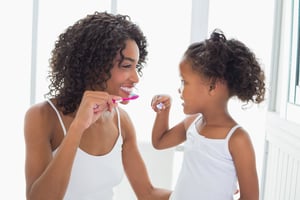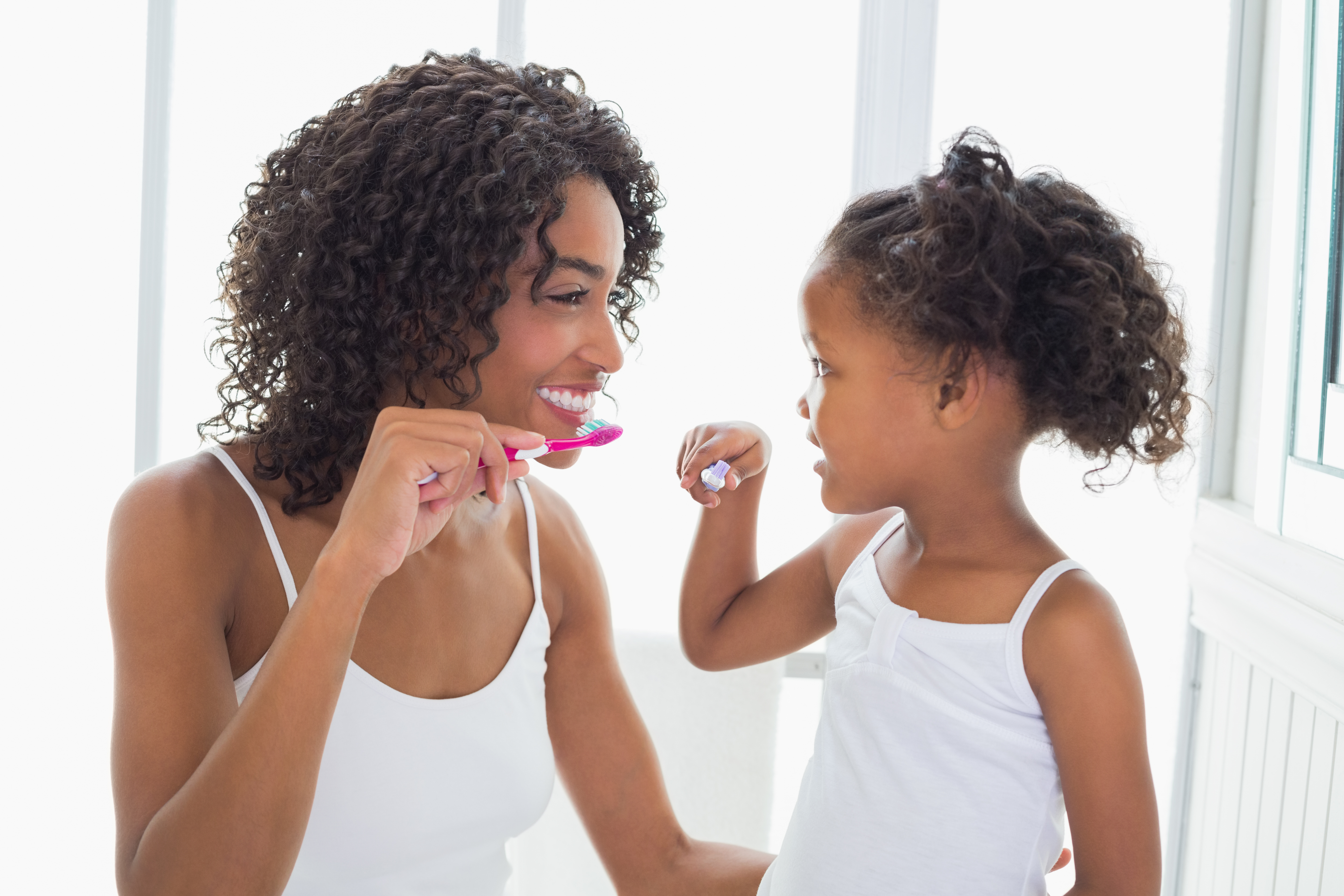 It isn’t unusual for young children to have issues with oral health. In fact, HealthyChildren.org points out that by age 2, 10 percent of toddlers have one or more cavities. By age 3, the number jumps up to 28 percent, which is nearly 1 in 3 toddlers. By 5 years old, nearly half of children have at least one cavity.
It isn’t unusual for young children to have issues with oral health. In fact, HealthyChildren.org points out that by age 2, 10 percent of toddlers have one or more cavities. By age 3, the number jumps up to 28 percent, which is nearly 1 in 3 toddlers. By 5 years old, nearly half of children have at least one cavity.
Because tooth decay in a child’s baby teeth can cause problems in his or her permanent teeth, it makes sense to teach your child good dental habits from a young age.
Brush Twice a Day
Early on, the goal is to help your child make oral hygiene a natural part of the day. You’ll need to help, at least at first, as your child begins to brush twice a day until all the sticky plaque is removed from his or her teeth. When a tooth first appears, just a smear of fluoride toothpaste — the size of one rice grain — should be enough. By the time your child reaches age 3, the amount of toothpaste used to maintain healthy teeth should be pea-sized.
Experiment with different types of brushes to find one that works well for your child. Do the same with toothpaste. Brands have different flavors, and it can help significantly if you find one that has the flavor your child favors. Teach your child not to swallow the paste.
You can brush up and down, in circles, or back and forth. Whatever pattern effectively cleans your child’s teeth can work well. Your child will likely feel more comfortable with having his or her front teeth cleaned than back ones. But for effective oral hygiene, all teeth need cleaning. Some children will enjoy a game of “find the hidden teeth.”
You will likely need to supervise brushing until your child is about 8 years old.
Visit the Dentist
The American Academy of Pediatric Dentistry (AAPD) recommends your child has their first dental visit by age 1 or six months after their first tooth appears.
HealthyChildren.org also recommends taking your child to the dentist at a young age to emphasize the importance of good oral health, and he or she will likely become more focused on maintaining healthy teeth behaviors.
Dentists can catch problems, such as tooth decay, early. This early detection can help to stop decay from spreading and to manage what issues already exist.
If you would like to find a local pediatric dentist, enter your zip code to find a list.
When Do Brushing and Flossing Become Important?
The short answer is when your child has teeth that touch one another. According to MouthHealthy.org, it doesn’t matter whether brushing comes before flossing during a cleaning session or vice versa. What matters is that you regularly incorporate both brushing and flossing into your child’s daily routine.
Making Flossing Fun
Flossing can be difficult for kids. They may complain that it’s uncomfortable or that they can’t do it correctly. Try making flossing fun by:
- Using kid-sized flossers: These flossers are smaller, which makes them easier for kids to get between their tiny teeth.
- Flossing with them: Kids will emulate what they see you do, so try flossing with them to show the importance of dental hygiene.
- Making it a game: See who can floss the quickest among siblings or child and parent. Or create a flossing chart and give your child a sticker each time they floss. Once they’re accumulated enough stickers, they get a prize.
More Resources
To find plenty of resources about how to maintain your child’s oral health, you can consult this page created by the Centers for Disease Control and Prevention (CDC). It also makes sense to ask whatever questions you have about your child’s teeth when you visit the dentist.




